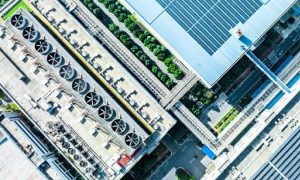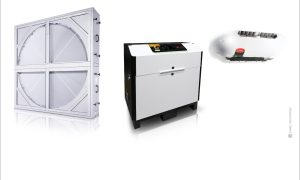Achieving the right balance between energy efficiency and maintaining ideal thermal conditions in places like malls and data centres is pivotal. Raul Simonetti, CAREL HVAC/R Corporate Business Manager and Enrico Boscaro, CAREL Group Marketing Manager – HVAC Industrial, explore how these spaces manage this delicate equilibrium.
With the surge in data centres and large-scale hospitality venues, please talk about how effective thermal management contributes to the sustainability and efficiency of these facilities.
Raul Simonetti: Indoor spaces, whether for people or industrial processes, require specific air quality and conditions for health and comfort. In both cases, HVAC (Heating, Ventilation, and Air Conditioning) systems play a crucial role in maintaining these desired conditions. They achieve this by managing internal heat loads, such as in data centres, and by regulating indoor air quality through filtered outdoor or recirculated air to keep airborne contaminants within acceptable levels, especially in shopping malls. While HVAC systems consume energy, modern equipment is designed to provide heating, cooling, and other services with minimal energy usage. Furthermore, their environmental impact can be reduced by using sensor-based control and monitoring systems that adapt HVAC operations to the actual requirements of the conditioned spaces. These systems can also detect and address trends indicative of potential issues before they occur, allowing for effective preventive maintenance.
Data centres, now considered increasingly industrial facilities, have evolved into critical “data factories,” ensuring their thermal management is essential to guarantee uninterrupted business operations. Given their increasing importance in business and daily life, data centres are becoming more widespread, leading to higher energy consumption. Thermal management significantly contributes to energy costs so any efficiency improvements might represent significant savings.
Please discuss the balance between energy efficiency and optimal thermal conditions in malls and data centres.
Enrico Boscaro: The tradeoff between efficiency and business continuity is one of the key questions for the data centre when it comes to cooling these facilities. Data centres are vital for various mission-critical applications, where the availability of IT services is of the utmost importance. Nevertheless, there are substantial opportunities for conserving energy in data centre cooling by implementing effective server layouts, such as using a hot aisle-cold aisle arrangement, making informed decisions about temperature setpoints, leveraging free cooling methods, and selecting the most appropriate cooling techniques based on the specific constraints of the installation. A comprehensive approach is essential to ensure energy savings and risk reduction. This approach aims to minimise the reliance on mechanical cooling. It could be used for a limited amount of time and only as a backup, guaranteeing at the same time both energy saving and risk reduction.

How do thermal control technologies assist in mitigating the spread of airborne contaminants within crowded public spaces, considering safety?
Raul: Airborne contaminant levels can be reduced through effective filtration of both outdoor and recirculated air and by regulating the frequency of air exchanges based on occupancy and monitored contaminant levels while ensuring the desired indoor conditions. To achieve this, a comprehensive control and monitoring system, aided by air quality sensors measuring variables like temperature, humidity, volatile organic compounds (VOCs), and carbon dioxide (CO2), can oversee these operations. This system can direct the various components of the HVAC system, including heating and cooling coils, humidifiers, energy recovery systems, and blowers. The greater the capacity for modulation in this system, the larger the saved energy and water while targeting the indoor set conditions.
With the diverse range of public spaces, from museums to transportation terminals, how do thermal management solutions adapt to meet the specific requirements of each environment?
Enrico: A crucial initial step involves conducting a thorough and comprehensive analysis of the public space, including its end use(s), the individuals who will occupy it, and their activities. No matter how intricate, the development of thermal management solutions should follow suit to yield the desired control over hygrothermal management while adhering to constraints.
These factors include maintaining the right temperature and humidity indoors and keeping the air free from too many contaminants. Also, we must decide how often to change the air, how it flows through space, and how fast it moves. Additionally, reduce noise as much as possible, manage the heat produced, consider specific installation needs, and regularly check and maintain the system. And ensure we have the right people with the skills to manage the thermal system effectively. By connecting energy-efficient devices and advanced automation systems, these systems can effectively and promptly meet the space’s requirements sustainably. This approach also results in investments that are worthwhile in the long run.
Cookie Consent
We use cookies to personalize your experience. By continuing to visit this website you agree to our Terms & Conditions, Privacy Policy and Cookie Policy.















